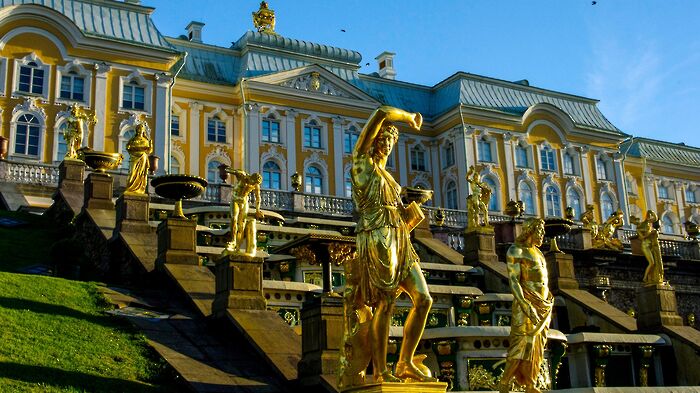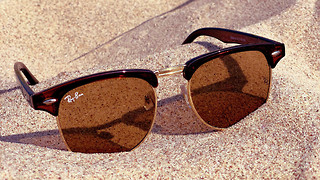Julie Mehretu: Drawings and Monotypes review
Connie de Pelet introduces us to the abstracted shapes of Julie Mehretu’s Drawings and Monotypes installation at Kettle’s Yard

A white room in the gallery space at Kettle’s Yard, light and concrete-floored, is the home of Julie Mehretu’s eighty four monotypes. Clean-feeling, like a deep breath, and, for the population of works before you, not overwhelming. The walls are lined with identically framed monotypes; black frames, white paper, a spectrum of greys on each page. The pieces are set out in grids, neatly spanning all four walls, but there is nothing sterile about the collection.
Within seconds, it becomes clear that each of the eighty four could hold the space alone, but equally each flourish in their proximity with the others. The choice to hang them all together is alluring in itself. It extends their impact as a body of work, draws connections between disparate pieces that are otherwise only tied together by a shared medium. Interestingly, four of Mehretu’s drawings are hung outside the main gallery space, and another four in the bedroom of the house of Kettle’s Yard.
“It has been suggested that Mehretu’s works undergo a shift before and after 2012”
Her works are threaded through these buildings, left to interact with the multitude of artworks that make up Jim and Helen Ede’s previous home. The drawings are a little more delicate; rendered in spidery lines; and, so perhaps interact more subtly with that melting pot of art forms, and with the otherwise unpopulated entrance hall. There is something nice about the dominance allowed to the monotypes by their being housed in a single space. They are allowed a gravity, a feeling of mass in the lightness of a simple white room.
There is an inevitable tendency to scan the works for a favourite. A necessary pull to a particular piece. I found myself trying to choose mine; as the visitors around me pointed to one or another. Nudges and lowered voices wondering why this one or that. Such delicate threads draw the works together; similarities in mark making and texture. Your eye is drawn to the piece in front of you, to one across the room, or one up to the left, that feels like the next step in a conversation spurred by the one before. Equally, the abstracted subjects of each, the range of shapes present, give rise to a dialogue, if not a sense of competition within the collection. They are just different enough to separate into ones preferred, but too intimately linked to form a hierarchy of success.
“The various thresholds collide as Mehretu condenses elements of space and time into works that are at once sprawling and tightly rendered”
It has been suggested that Mehretu’s works undergo a shift before and after 2012. Born in Addis Ababa, Ethiopia, in 1970, she now lives and works in New York City. She is known for her large-scale paintings: architectural scapes rendered in layers and layers of acrylic, pen, ink and pencil. Famed works like Mogamma, A Painting in Four Parts, begin with a sketch of a building; straight lines and sharp corners conjure the crispness of contemporary architecture. Layered on top of this, so that the organic and the manufactured begin to fuse, are abstracted marks, smudges and streaks of texture and colour. She discusses themes of urbanisation, the compression of living in a twenty first century world. The various thresholds collide as Mehretu condenses elements of space and time into works that are at once sprawling and tightly rendered.
A foundation in literal representation is common to many of Mehretu’s earlier works. They are pushed beyond this faithful depiction with her trademark textures. In Mehretu’s own words, they are “story maps of no location.” Despite the overall abstraction of these newer monotypes, they still exhibit something of these ‘story maps’. Rather than providing literal representations these works offer intersections with Mehretu’s themes. The speed and concentration of ideas of contemporary living are still present, but rather than offering an intensified image of a recognisable form, as much of her earlier works do, these pieces offer the opportunity of a limitless field of interpretation.
“I spot the curve of an arm, repeated into the kind of pattern that would circle a piece of pottery, and my eye is pulled up to finger prints and arrows”
It is possible, even, to view the works as a kind of magic eye image; a kaleidoscope of abstracted images that can be unpicked. Amongst streaked inks are fingers, breasts, and curves of flesh. Liquids drench solids, mountain ranges split roofs and line streams. A mother next to me crouches with her daughter, and explains that, “What I see is different to what you see.” They decide on one in the bottom row in the child’s reach: “it reminds me of dancing,” the mother says.
Or, perhaps they are abstracted to an extreme of subject-less mark making. Experiments in media that culminate in textured strokes. Mehretu’s use of monotyping is particularly accommodating of such a celebration. The technique involves drawing or painting onto a smooth surface, traditionally copper plate, as Mehretu uses, before printing onto a second surface, like Mehretu’s white paper. As the ink is transferred, the image is inverted; printed as a reflection of the artist’s original marks. Each piece is by nature unique; the product of a single print. There is great freedom in this: the boundaries of a work are instantly stretched. An element of control and intention is refused by the mirror image that the technique produces. These prints are then overlaid with further materials, perhaps more ink, or a streak of acrylic paint. This layering creates dimension; it is difficult to trace the foundational print and the additional layers; but a powerful depth results regardless.
I can’t settle on a favourite. I spot the curve of an arm, repeated into the kind of pattern that would circle a piece of pottery, and my eye is pulled up to finger prints and arrows. It is purely the mark making that conjures magic in these works for me. As I write this a group of children are smudging at pencil lines on white printer paper with their fingers. I recognise some of the sheer joy in the material from the artworks around me. In this series, Mehretu never deviates from her spectrum of grey, but nothing lacks here. Bring to this exhibition what you will, and the monotypes will accordingly flourish.
 Comment / Plastic pubs: the problem with Cambridge alehouses 5 January 2026
Comment / Plastic pubs: the problem with Cambridge alehouses 5 January 2026 News / Cambridge businesses concerned infrastructure delays will hurt growth5 January 2026
News / Cambridge businesses concerned infrastructure delays will hurt growth5 January 2026 News / New movement ‘Cambridge is Chopped’ launched to fight against hate crime7 January 2026
News / New movement ‘Cambridge is Chopped’ launched to fight against hate crime7 January 2026 News / AstraZeneca sues for £32 million over faulty construction at Cambridge Campus31 December 2025
News / AstraZeneca sues for £32 million over faulty construction at Cambridge Campus31 December 2025 Interviews / You don’t need to peak at Cambridge, says Robin Harding31 December 2025
Interviews / You don’t need to peak at Cambridge, says Robin Harding31 December 2025










